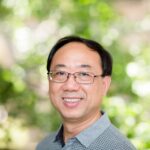
Journal of Combinatorial Mathematics and Combinatorial Computing
ISSN: 0835-3026 (print) 2817-576X (online)
The Journal of Combinatorial Mathematics and Combinatorial Computing (JCMCC) embarked on its publishing journey in April 1987. From 2024 onward, it publishes four volumes per year in March, June, September and December. JCMCC has gained recognition and visibility in the academic community and is indexed in renowned databases such as MathSciNet, Zentralblatt, Engineering Village and Scopus. The scope of the journal includes; Combinatorial Mathematics, Combinatorial Computing, Artificial Intelligence and applications of Artificial Intelligence in various files.
- Research article
- https://www.doi.org/10.61091/jcmcc124-18
- Full Text
- Journal of Combinatorial Mathematics and Combinatorial Computing
- Volume 124
- Pages: 259-276
- Published Online: 17/03/2025
Achieving accurate prediction of financial market fluctuations is beneficial for investors to make decisions, while machine learning algorithms can utilize a large amount of data for training and learning, which has good effect on predicting financial market fluctuations. The article first analyzes the financial dataset, and then constructs a feature selection model by combining Boruta and SHAP to screen the financial data features. Based on the LSTM model, a new Dropout layer and fully connected layer are designed to construct the AMP-LSTM model to realize the prediction of financial market fluctuations. The Boruta SHAP algorithm has a RMSPE of 0.242, which is good for screening. The prediction performance of the AMP-LSTM model is significantly better than that of the traditional LSTM (p<0.01), and the predicted values are closer to the actual values. The method in this paper performs better than MLP, RNN and other methods in general in terms of error performance when predicting indicators such as WTI, Brent, LGO, etc., and is able to realize the prediction of financial market volatility in the digital economy environment.
- Research article
- https://doi.org/10.61091/jcmcc124-17
- Full Text
- Journal of Combinatorial Mathematics and Combinatorial Computing
- Volume 124
- Pages: 243-258
- Published Online: 17/03/2025
Aiming to address shortcomings in existing time series prediction models, this paper proposes an LSTM model enhanced by fused multi-scale convolutional attention (MCA-LSTM). We design the experimental parameters, construct a stock price dataset, and model the improved LSTM using individual stock closing prices, with prediction accuracy evaluated via RMSE, MAPE, and MAD. To assess the arbitrage and generalization performance of the MCA-LSTM portfolio model, we compare the application of the MCA-LSTM-BL model. Furthermore, within the framework of a mean semi-absolute deviation (MSAD) portfolio optimization model, we develop a new portfolio optimization approach based on return forecasting (MCA-LSTM+MSAD). The asset values and return predictions of various portfolio models are analyzed under transaction cost considerations, and the proposed MCA-LSTM+MSAD model achieves an excess return of 56.98%, consistently maintaining the highest portfolio value throughout the trading period. Overall, our findings indicate that the MCA-LSTM+MSAD model is a promising tool for portfolio optimization and warrants further development for real investment applications.
- Research article
- https://www.doi.org/10.61091/jcmcc124-16
- Full Text
- Journal of Combinatorial Mathematics and Combinatorial Computing
- Volume 124
- Pages: 235-242
- Published Online: 17/03/2025
In this paper, we prove that, the Wiener index of a connected tripartite graph is any natural number except 1, 2, 5, 6 and 11.
- Research article
- https://www.doi.org/10.61091/jcmcc124-15
- Full Text
- Journal of Combinatorial Mathematics and Combinatorial Computing
- Volume 124
- Pages: 229-234
- Published Online: 17/03/2025
For every connected graph
- Research article
- https://doi.org/10.61091/jcmcc124-14
- Full Text
- Journal of Combinatorial Mathematics and Combinatorial Computing
- Volume 124
- Pages: 219-227
- Published Online: 17/03/2025
Let
1. Every locally complex algebra is a quadratic algebra.
2. Every alternative locally complex algebra is isomorphic to either
3. Every commutative locally complex algebra without divisors of zero is isomorphic to
4. Every finite-dimensional algebra satisfying the uniqueness of the square root except the sign has dimension
- Research article
- https://doi.org/10.61091/jcmcc124-13
- Full Text
- Journal of Combinatorial Mathematics and Combinatorial Computing
- Volume 124
- Pages: 207-217
- Published Online: 16/03/2025
To solve the problem of identifying intrinsic relationships between objects and mirror segmentation in semantic segmentation of urban scenes using current multi-modal data, this study innovatively integrates color images, depth information, and thermal images to propose a network model that integrates modal memory sharing and form complementarity, and a hierarchical assisted fusion network model. Compared with existing advanced urban scene semantic segmentation methods, the proposed method performed excellently in terms of performance, with an average pixel accuracy and mean intersection over union of over 80% for different objects. In addition, the research method achieved clearer and more complete segmentation results by strengthening contextual associations, and edge processing is also smoother. Even in object segmentation with similarities in distance, shape, and brightness such as “vegetation” and “sidewalk”, the research method still maintained high accuracy. The research method can effectively handle the complexity of urban scenes, providing a new solution for semantic segmentation of multi-modal data in urban scenes.
- Research article
- https://www.doi.org/10.61091/jcmcc124-12
- Full Text
- Journal of Combinatorial Mathematics and Combinatorial Computing
- Volume 124
- Pages: 189-205
- Published Online: 16/03/2025
Blockchain technology has the characteristics of data anti-tampering and anti-forgery, which can provide solution ideas for the secure storage and transmission of data in distributed networks. The study applies blockchain technology to data auditing, constructs an aggregated signature based on conditional identity anonymization to protect user privacy, simplifies the auditing computation by using homomorphic hash function, and deploys three kinds of smart contracts on the blockchain to design a blockchain-based data integrity auditing scheme. For the privacy protection problem, a blockchain privacy protection model based on differential privacy is constructed by integrating the differential privacy policy into the blockchain smart contract layer. The experimental results show that the data integrity auditing scheme has superior blockchain storage cost and time overhead, and the average time overhead under different dynamic operations is below 30ms. The privacy protection model also exhibits high efficiency, with encryption and decryption times of 0.075s and 0.063s, respectively, under the largest data file, and a significant speed advantage in all phases of operation. The proposed scheme in this paper meets the needs of data integrity and privacy protection, and can provide efficient services for users.
- Research article
- https://www.doi.org/10.61091/jcmcc124-11
- Full Text
- Journal of Combinatorial Mathematics and Combinatorial Computing
- Volume 124
- Pages: 173-188
- Published Online: 16/03/2025
Mango weaving, a traditional handicraft in Guangxi, is facing decline. This study explores AI technology’s role in its protection and innovation by analyzing consumer reviews using perceived value theory and the LDA topic model to identify preferences for improving production. A lightweight generative adversarial network with a non-local attention mechanism is proposed for text-to-multi-objective image generation, aiding innovative design. Consumers expressed 82.6% satisfaction with mango weaving. Reviews were categorized into five themes, highlighting the need for improvements in emotion, quality, and price. The AI-generated image model outperformed others, with IS and FID scores improving by 21.85% and 16.46%, respectively. AI enhances mango weaving by refining design, improving product quality, and expanding its preservation and development.
- Research article
- https://doi.org/10.61091/jcmcc124-10
- Full Text
- Journal of Combinatorial Mathematics and Combinatorial Computing
- Volume 124
- Pages: 159-171
- Published Online: 16/03/2025
The ocean is vital for human survival and development, serving as the birthplace of life and a source of food, minerals, and scientific research materials. It plays a crucial role in global trade, economic growth, climate regulation, and ecological balance. Underwater positioning technology is fundamental to marine engineering, with underwater acoustic passive positioning being essential for sonar source localization. Active and passive acoustic systems help measure underwater noise and determine target locations. Passive systems rely on signals emitted by targets, while active systems use interaction signals for positioning. This study applies machine learning to improve acoustic beacon signal recognition in underwater positioning. Results show that machine learning enhances recognition speed by 8% and detection accuracy by 9% compared to traditional methods. By optimizing underwater acoustic signal recognition, this approach enhances positioning accuracy, reduces costs, and advances intelligent marine technology, providing innovative solutions for complex marine environments.
- Research article
- https://www.doi.org/10.61091/jcmcc124-09
- Full Text
- Journal of Combinatorial Mathematics and Combinatorial Computing
- Volume 124
- Pages: 143-157
- Published Online: 16/03/2025
Nowadays, “Artificial Intelligence + Education” is transforming teaching and learning. In this study, we employ AI-based data mining to innovate educational management by designing an academic monitoring system using K-means clustering and developing an early warning model through stacking multi-model superposition. Targeted management measures, including personalized video recommendations, are implemented based on the model’s predictions to promote individualized student development. By analyzing daily behavior data from 500 college students, the K-means algorithm effectively classified them into four groups, and the academic alert model achieved a prediction accuracy of 84.19%, outperforming single base models. The implementation of this personalized management method significantly improved student performance compared to traditional approaches, demonstrating its potential to enhance educational outcomes.





